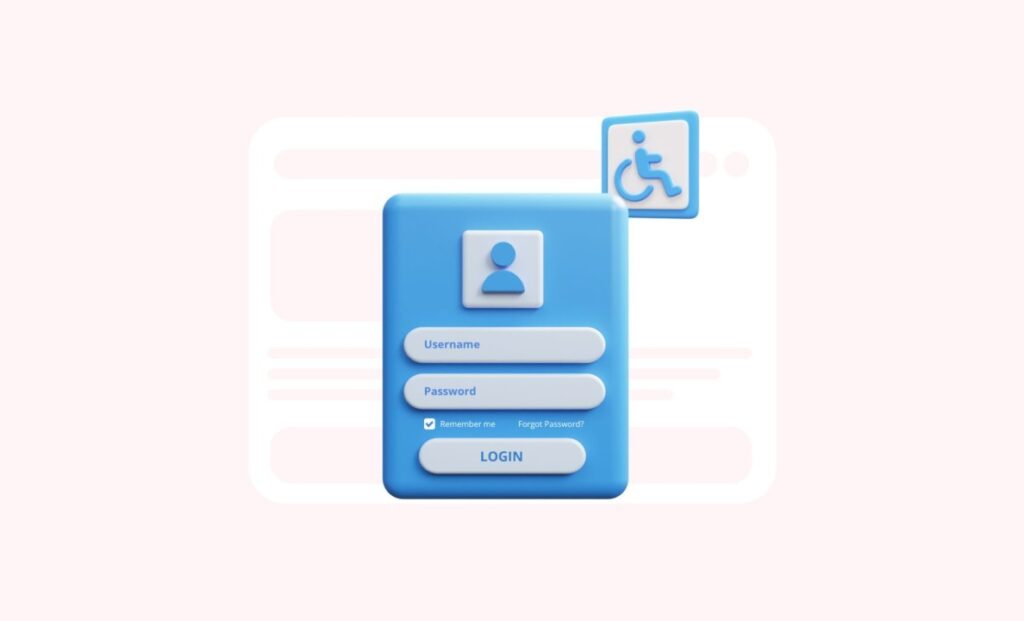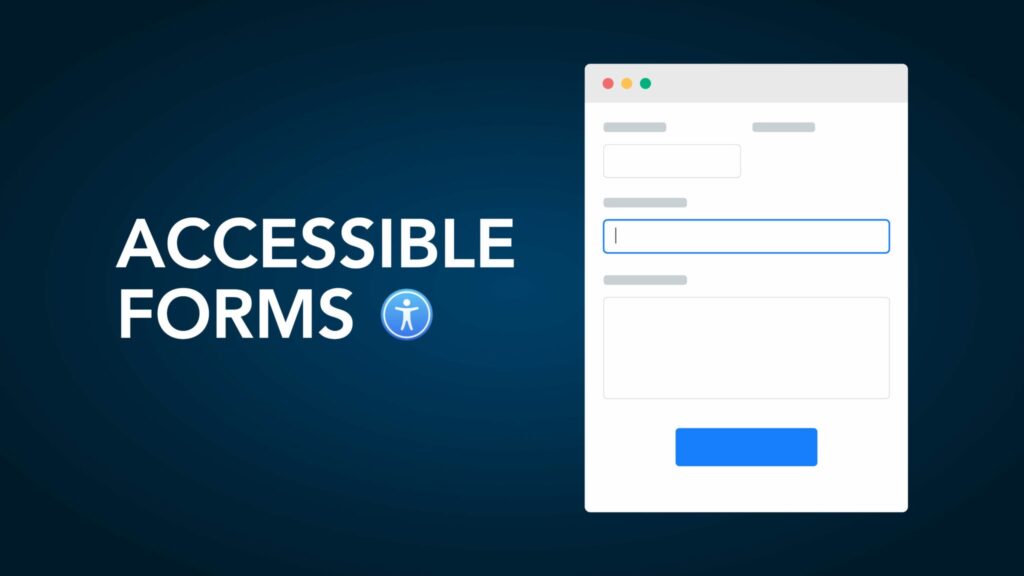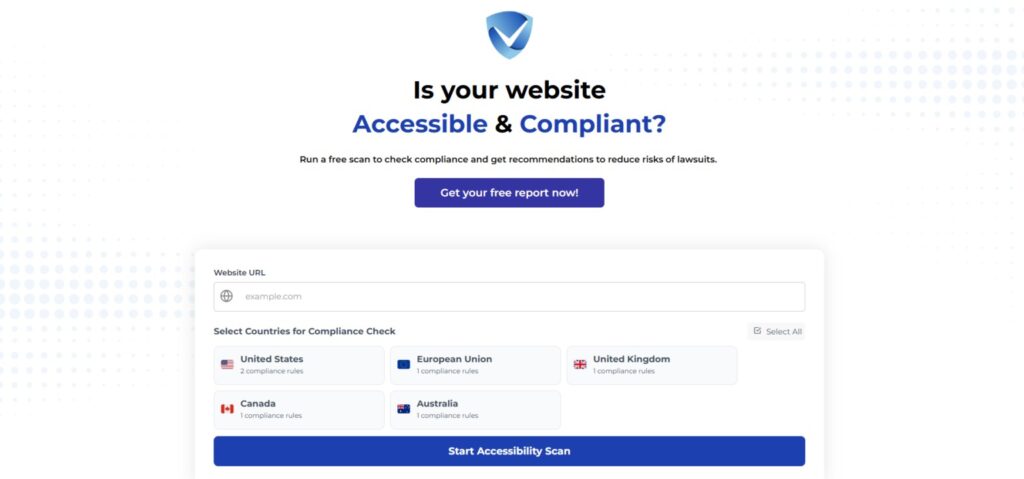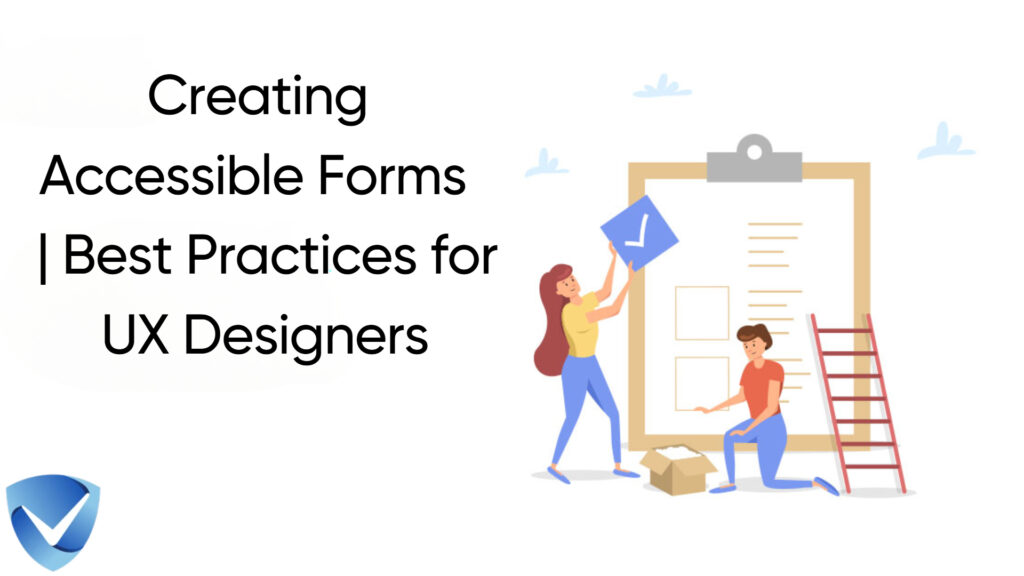Introduction
In the increasingly digital landscape of 2025, the creation of accessible forms has emerged as a cornerstone of user experience (UX) design. Forms are integral to various online interactions, serving as gateways for users to submit information, make purchases, and engage with services. However, when these forms lack accessibility, they can inadvertently exclude individuals with disabilities, creating barriers that diminish their overall experience. As UX designers, understanding the significance of accessible forms is critical not only from a legal standpoint but also from a moral perspective to foster inclusivity.
The pivotal role forms play in digital interactions cannot be overstated. They are not merely fields for input; they are vital components that determine how efficiently users can navigate through a website or application. For persons with disabilities, accessible forms ensure that all users can understand and interact with the design seamlessly. This encompasses various aspects such as keyboard navigation, screen reader compatibility, and meeting the Web Content Accessibility Guidelines (WCAG). The failure to consider these elements can lead to frustration and disengagement, particularly for users who rely on assistive technologies.
Why Form Accessibility Matters
Forms serve as critical touchpoints in user interactions across various platforms. They are integral to processes such as sign-ups, checkouts, and surveys, functioning as gateways through which users provide information and engage with services. However, the effectiveness of these forms can be significantly impaired if they are not designed with accessibility in mind. Inaccessible forms can present notable challenges to users with disabilities, creating barriers that hinder their ability to participate fully in online experiences.
For users with visual impairments, the lack of proper labels and form descriptions can make it difficult to understand what information is required, while individuals with motor impairments may struggle to navigate forms that are not optimized for keyboard use. Furthermore, cognitive disabilities can complicate interactions with overly complex forms that do not offer clear instructions or support. As a result, users may abandon these forms, leading to decreased user satisfaction and lost opportunities for businesses.
Implementing accessible forms not only addresses these challenges but also brings substantial benefits. Ensuring that forms adhere to accessibility standards, such as the Web Content Accessibility Guidelines (WCAG) and the Americans with Disabilities Act (ADA), promotes inclusivity in digital interaction. By designing forms that everyone can use, businesses open themselves up to a broader audience, thereby enhancing their market reach. Additionally, compliant forms can protect organizations from legal repercussions associated with accessibility violations.
Incorporating accessibility features into form design also fosters a positive user experience. Clear labels, logical tab orders, and appropriate error messages enhance usability for all users, regardless of their abilities. As we move towards 2025, prioritizing accessible forms will be essential for UX designers who seek to create engaging, inclusive, and legally compliant digital environments. Ultimately, the importance of form accessibility cannot be understated; it is a vital aspect of user-centered design that benefits both users and organizations alike.

Best Practices for Designing Accessible Forms
Creating accessible forms is crucial for ensuring that all users, including those with disabilities, can engage with digital platforms effectively. One of the foundational practices for designers is utilizing native HTML form controls. By leveraging these built-in elements, designers can achieve a higher level of compatibility with assistive technologies, enhancing the user experience for everyone.
Another essential practice is the implementation of clear and concise labels for each form field. Labels should be explicitly associated with their respective fields to provide context, making it easier for users to understand the purpose of each input area. Additionally, grouping related fields logically not only improves the visual hierarchy but also aids cognitive processing, helping users complete forms more efficiently.
Keyboard navigation is vital for users who rely on assistive technologies, and designers should ensure all form components are accessible via keyboard shortcuts. This includes facilitating convenient tabbing through fields and offering visual cues that indicate the currently focused element, which can significantly enhance usability.
Descriptive error messages play a crucial role in user feedback, particularly when form inputs are incorrect. Designers should ensure that these messages are clear, informative, and positioned in proximity to the relevant fields. This helps users understand what went wrong and guides them in making the necessary corrections.
Effective management of focus during form interaction also contributes to accessibility. For instance, automatic focus shifts to error messages or confirmation alerts provide timely, contextual assistance. Additionally, maintaining proper color contrast between text and background is non-negotiable, as it greatly impacts readability and can prevent users from experiencing visual strain.
Through the implementation of these best practices, UX designers can significantly enhance the accessibility of forms, contributing to a more inclusive online environment.
Testing Forms for Accessibility Issues
Testing forms for accessibility issues is a critical component in the design process, especially as we move towards 2025. Ensuring that forms are accessible to all users, including those with disabilities, requires a combination of methodologies to identify and rectify potential issues. One primary method involves checking compatibility with assistive technologies, such as screen readers. This step includes confirming that all form elements are appropriately labeled and provide meaningful feedback to users relying on these technologies. For instance, using aria-labels can enhance the experience for screen reader users, allowing them to navigate and understand form fields effectively.
Another essential aspect of accessibility testing is validating keyboard navigation. It is paramount that users can navigate through the form using only a keyboard, as many individuals with mobility disabilities depend on this method. Designers should ensure that all interactive elements are reachable and operable through the keyboard, following logical tab orders and providing visual focus indicators to guide users through the form.
Conducting user testing with individuals with disabilities brings invaluable insights that automated tests cannot replicate. Engaging with diverse participants allows designers to observe how real users interact with forms, identifying pain points and areas for improvement that may not be evident through other testing methods. Including feedback from these sessions can significantly strengthen the accessibility of your forms.
Lastly, performing both automated and manual audits is vital for compliance with the Web Content Accessibility Guidelines (WCAG). Automated tools can quickly flag various issues, but a manual review is crucial for assessing the effectiveness of the form’s design and its overall usability. By integrating these testing techniques, UX designers can create forms that better serve all users, ultimately contributing to a more inclusive digital landscape.

Common Pitfalls to Avoid in Form Design
Form design is a critical component of user experience (UX) and accessibility. However, there are several common pitfalls that designers frequently encounter, which can hinder the effectiveness of their forms. One significant mistake is the reliance solely on placeholder text as a means of instruction. While placeholder text can provide context within a field, it often disappears once the user begins typing, which can lead to confusion. Accessible forms should always include labels that remain visible to ensure clarity even after user input.
Another common issue involves the use of non-semantic HTML elements without appropriate Accessible Rich Internet Applications (ARIA) attributes. Semantic elements, such as <label> and <input>, provide inherent meaning to both user agents and assistive technologies. When designers opt for non-semantic elements, they often overlook the need for ARIA roles and properties, making it difficult for screen reader users to navigate and understand the form’s structure. It is crucial for designers to utilize semantic HTML correctly and enhance accessibility with ARIA attributes when necessary.
Overwhelming users with excessive form fields is yet another frequent mistake. Long and complicated forms can cause user fatigue and may lead to abandonment. Forms should be concise and prioritize the fields that are absolutely necessary for successful completion. When appropriate, designers can consider grouping related fields and employing progressive disclosure techniques that reveal additional options only when needed. This approach not only streamlines the user’s experience but also enhances accessibility for individuals with cognitive disabilities.
In summary, avoiding these common pitfalls—such as relying solely on placeholder text, neglecting semantic elements and ARIA attributes, and overwhelming users with excessive fields—can greatly improve form accessibility and user experience. By adhering to best practices, UX designers can create more intuitive and inclusive forms that cater to a diverse range of users.
Continuous Improvement in Form Accessibility
In the realm of user experience (UX) design, the principle of continuous improvement is essential, particularly concerning form accessibility. As technologies and standards evolve, the Web Content Accessibility Guidelines (WCAG) undergo updates, notably with the recent emergence of WCAG 2.2. UX designers are tasked with keeping abreast of these changes to ensure forms remain compliant and accessible to all users. Adapting to these evolving guidelines not only enhances usability but also upholds legal obligations for inclusivity.
Regularly updating forms in accordance with the latest WCAG standards can significantly improve user interaction. This includes addressing diverse needs, such as those of users employing assistive technologies or those with cognitive disabilities. For example, WCAG 2.2 introduces more inclusive design recommendations that emphasize clarity and simplicity. These guidelines help in creating forms that accommodate various user experiences, which can be greatly beneficial.
An integral part of continuous improvement is the responsiveness to user feedback and data analytics. Monitoring how users interact with forms can reveal critical insights into accessibility issues that may not be immediately apparent. Tools such as user testing sessions and feedback forms can help gather real-time reactions. By analyzing these interactions, designers can pinpoint areas that require enhancements, ensuring that accessibility is not merely a one-off goal but a dynamic process. Regular reviews of analytics help to identify patterns, enabling designers to make informed decisions and proactively address barriers that users encounter.
Ultimately, fostering an environment of ongoing improvement is vital. As accessibility needs evolve, so too should the approaches taken by UX designers. By prioritizing updates in line with WCAG guidelines and valuing user feedback, forms can become not only more accessible but also increasingly efficient, leading to a superior overall user experience.
To Summarize
Accessible forms are a fundamental component of fostering inclusive digital experiences, and their significance will only grow in the coming years. As the digital landscape continues to evolve, it is crucial for UX designers to recognize the essential role these forms play in ensuring that all users, including those with disabilities, can engage fully with digital content and services. By prioritizing accessibility within their design strategy, designers not only adhere to legal compliance requirements but also enhance the overall user experience.
Designing forms that are accessible means considering diverse user needs and implementing best practices that facilitate easy navigation and interaction. This includes thoughtful visual hierarchy, proper labeling, and error handling, all of which contribute to a more intuitive experience. When designers invest time in creating accessible forms, they are not only contributing to a more equitable digital environment but also improving the usability for all users, regardless of their abilities.
Furthermore, embracing accessibility as a core principle in form design allows organizations to reach a broader audience, thereby increasing engagement and potential conversions. Users appreciate sites and services that are easy to navigate and understand, and accessible forms serve as a step towards building trust and reliability. As we move into 2025 and beyond, it is imperative for UX designers to remain committed to accessibility as a fundamental principle in their work.
By doing so, they will not only benefit users with disabilities but will also enhance usability for everyone. In understanding that accessibility transcends legal requirements, UX designers can create more inclusive digital experiences that ultimately serve all users more effectively.
Try Our Free Website Accessibility Scanner

Making digital forms more accessible is not just a guideline but an essential practice for UX designers in 2025. As the landscape of web accessibility continues to evolve, taking proactive measures to enhance form usability for all users can significantly improve the overall experience. It is crucial for designers to recognize the value of inclusivity in their work, as accessible forms can empower individuals across various abilities. Therefore, the first step towards achieving this goal is to evaluate your existing forms critically.
We encourage you to leverage the power of technology by utilizing a free website accessibility scanner, which can help identify potential areas for improvement in your forms. These tools assess aspects like color contrast, keyboard navigation, and text alternatives, providing valuable insights into the usability and accessibility of your designs. By utilizing these scanners, you can gain a comprehensive understanding of where enhancements are needed, allowing for a more informed redesign process that incorporates accessibility features effectively.
Furthermore, consider adopting a user-centered design approach that involves end-users in the testing phase. Gather feedback from individuals with disabilities and integrate their perspectives into your design solutions. This collaborative process not only aids in the identification of pain points but also fosters a more inclusive design mentality within your development team.
As a part of the ongoing commitment to accessible design, keep abreast of the latest trends and best practices in web accessibility. Continuous education will enable you to stay informed about new guidelines, tools, and user needs, ultimately leading to more effective and inclusive forms. By taking these affirmative actions, you contribute to a digital environment that welcomes everyone, making accessibility a fundamental aspect of your design philosophy.



